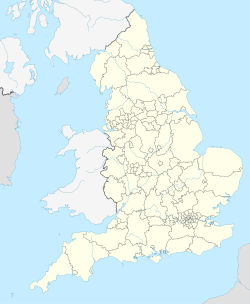| St Gregory's Church | |
|---|---|
| Church of St Gregory the Great | |
 | |
| 51°54′05″N2°04′49″W / 51.9015°N 2.0803°W | |
| OS grid reference | SO 94570 22558 |
| Location | Cheltenham |
| Country | England |
| Denomination | Roman Catholic |
| Website | StGregorys.org.uk |
| History | |
| Status | Parish Church |
| Founded | 1809 |
| Dedication | Pope Gregory I |
| Consecrated | 6 November 1877 |
| Architecture | |
| Functional status | Active |
| Heritage designation | Grade II* listed [1] |
| Architect(s) | Charles Hansom |
| Style | Gothic Revival |
| Years built | 1854 to May 1857 |
| Completed | 1876 |
| Administration | |
| Province | Birmingham |
| Diocese | Clifton |
| Deanery | St Kenelm [2] |
| Parish | St Gregory the Great with St Thomas More |
Listed Building – Grade II* | |
| Official name | Church of St Gregory |
| Designated | 4 May 1972 |
| Reference no. | 1387870 |
St Gregory the Great Church is a Roman Catholic Parish church in Cheltenham, Gloucestershire, England. It was founded in 1809 and rebuilt from 1854 to 1857. It is situated on the corner of St James' Square and Clarence Street. It was designed by Charles Hansom and is a Grade II* listed building.




